What Is Intelligent Document Processing Software? A Practical Guide
Discover how intelligent document processing software uses AI to read and understand business documents, automating workflows and eliminating manual data entry.
Every business knows the feeling. That slow, grinding halt caused by manual data entry from invoices, contracts, and customer forms. It’s a time-suck that’s practically begging for errors. This is where Intelligent Document Processing (IDP) software steps in—acting less like a tool and more like a smart assistant that doesn't just read documents, but actually understands them and puts that information to work for you.
From Piles of Paper to Automated Power

The challenge is universal. You have stacks of paperwork, both physical and digital, that keep your most skilled people bogged down in mind-numbing tasks. This manual grind doesn't just feel slow; it actively slows down critical operations, from paying suppliers on time to getting a new client onboarded. It's a bottleneck that hits your efficiency and, ultimately, your bottom line.
This is exactly the problem that intelligent document processing software was built to solve. Think of it as the next logical step beyond basic document scanning. For years, we’ve had Optical Character Recognition (OCR) technology that could turn a picture of a document into a block of text. IDP, however, is a massive leap forward.
Beyond Simple Text Recognition
The real magic is in the "intelligent" part. IDP software uses artificial intelligence to do what a person would do: read the document, understand the context, and then decide what to do with that information. It doesn't just see a string of numbers; it instantly recognizes it as an "invoice number" or a "due date."
An estimated 90% of all business information is unstructured, meaning it’s trapped in documents that don't fit neatly into a database. IDP is designed specifically to make sense of this chaos, turning things like emails, contracts, and reports into structured, usable data that platforms like Zemith can then use to automate entire workflows.
This ability unlocks the valuable information that's been locked away inside your documents. Instead of your team spending hours manually typing data into a spreadsheet, the software does it for them—faster and with far greater accuracy.
Building an Automated Engine
But a true IDP solution does more than just pull out data. It acts as the engine for your entire workflow. A powerful platform like Zemith won't just extract information; it will also validate it against your existing records, route it to the right person for approval, and then push it directly into your other business systems. The result is a seamless, hands-off process from start to finish.
Just think about what that means for your business:
- Drastically Reduced Manual Entry: Automate the flow of information from documents into your core systems, practically wiping out typos and human error.
- Accelerated Business Cycles: Squeeze processes like accounts payable, customer onboarding, and claims processing down from days to just a few minutes.
- Unlocked Business Insights: Turn your static documents into a treasure trove of searchable, analyzable data you can use to make smarter decisions.
This guide will walk you through exactly how intelligent document processing software works and the real-world impact it can have. We'll show you how platforms like Zemith give you the tools to finally conquer your most complex document challenges and find a whole new level of operational efficiency.
How IDP Software Learns to Read and Understand
To really get what makes intelligent document processing so powerful, you have to think beyond a simple document scanner. Traditional Optical Character Recognition (OCR) is a bit like someone who can read letters aloud but has no idea what the words actually mean when put together. IDP, on the other hand, is like a seasoned expert in the office. It doesn't just read the text; it understands the document's purpose, its context, and what you need from it.
This level of understanding isn't magic—it’s a carefully orchestrated process driven by artificial intelligence. The software systematically breaks down every document, turning a jumble of unstructured information into clean, organized data you can actually use. This is where the "intelligence" in IDP truly shines.
The Core AI-Powered Workflow
The journey from a messy document file to perfectly structured data involves a few critical steps, with each one building on the last. It all kicks off the moment a document enters the system, whether it’s a scanned PDF, an email attachment, or even just a quick photo of a receipt snapped on a phone.
This workflow shows exactly how a document is processed from the moment it's captured to the final data being ready for use.
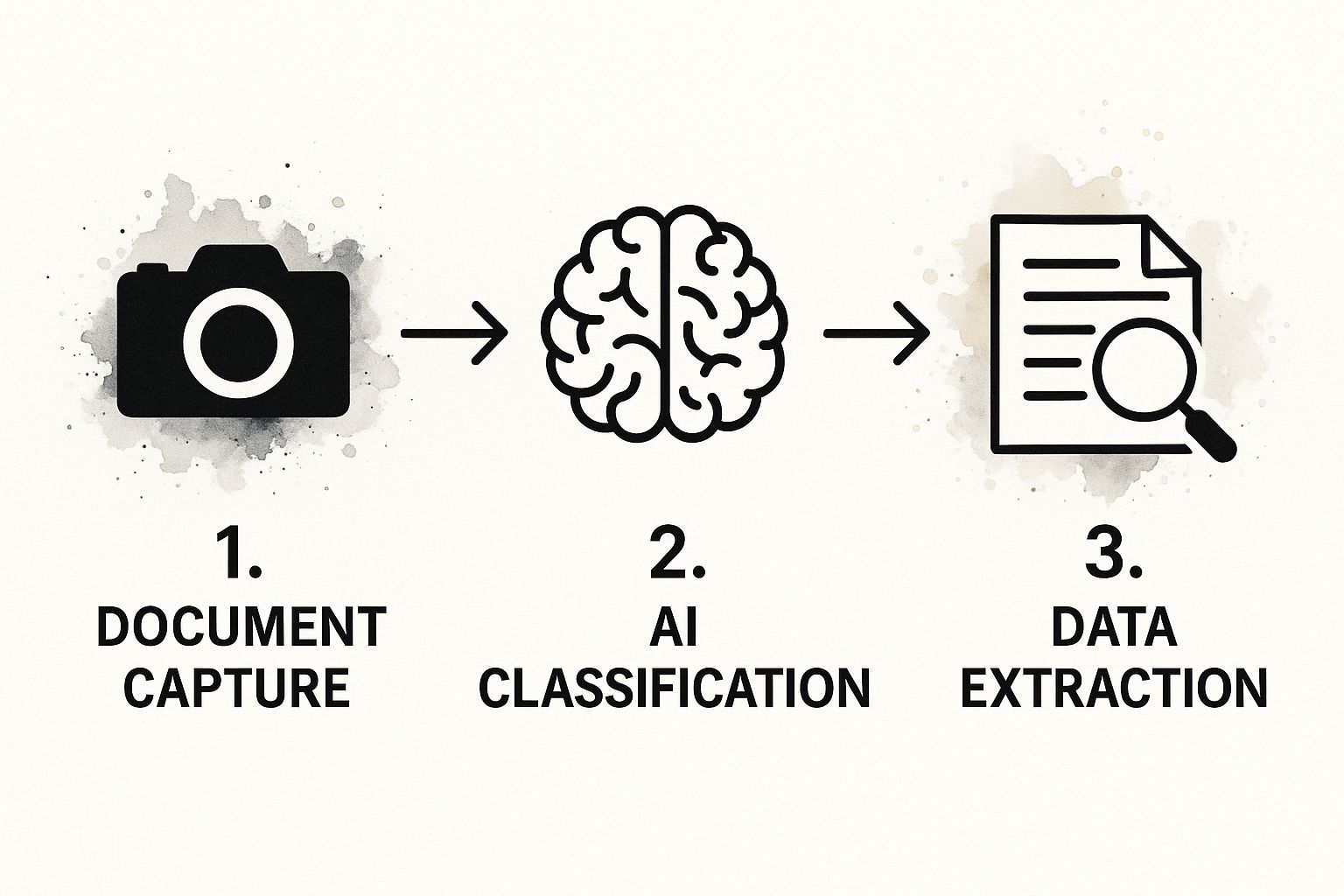
As you can see, it's a seamless handoff from capturing the document to letting the AI classify it and pull out the important stuff. This is the bedrock of what modern IDP can do.
It starts with pre-processing. Here, the software cleans up the document image before doing anything else. It might straighten a skewed page, get rid of dark spots or “noise,” or sharpen blurry text. The goal is simple: get the cleanest possible image to ensure the next steps are as accurate as possible.
Next, an advanced OCR engine takes that clean image and converts it into machine-readable text. (If you want a deeper dive on this part, our guide on how to convert a PDF to text is a great resource). This is the stage where raw characters are identified, setting the stage for the real analysis.
From Text to Meaningful Data
With the text captured, the intelligent part of the process takes over. Using powerful technologies like Natural Language Processing (NLP), the software analyzes the text to figure out its meaning and context. This is the single biggest difference between basic OCR and true IDP.
An IDP system doesn't just see the characters "I-N-V-0-1-2-3." It recognizes that this string of text, located next to a vendor’s logo and a total balance, is an invoice number. That contextual awareness is everything.
The AI then gets to work on two crucial tasks:
- Document Classification: The system figures out what kind of document it's looking at. It instantly knows the difference between an invoice, a purchase order, a legal contract, or an employee onboarding form by analyzing its layout, keywords, and overall structure.
- Data Extraction: Once it knows what it is, the software zeroes in on the specific information you need. It finds and extracts the "due date," "customer name," or "total amount" no matter where they are on the page.
Platforms like Zemith are particularly effective at this because they come with pre-trained AI models that are already experts at handling the most common business documents. This means you can achieve incredibly high accuracy right out of the box, without having to spend months training a new system from scratch.
Validating and Delivering the Final Product
The final step is just as critical as the first. After the data is extracted, the IDP software runs it through a series of validation checks. It might cross-reference information against your business rules or existing databases to make sure everything adds up. For example, it can check if a purchase order number on an incoming invoice matches an open PO in your accounting system.
This ensures the data flowing into your business systems isn't just extracted—it's also clean, correct, and completely reliable. Only after passing these checks does the IDP push the structured data into your other applications, like your ERP or CRM, closing the automation loop. This entire sequence—from cleanup to validation—is what makes intelligent document processing software such an essential tool for any modern business.
Putting Your Business Workflows on Autopilot

True intelligent document processing isn’t just about pulling data off a page. It's about creating a completely automated, hands-free journey for your information. The real magic happens when the software doesn't just read a document but also knows exactly what to do with it next, setting off a chain reaction that completes an entire business process from start to finish.
Think about an invoice arriving as an email attachment. Without IDP, that simple event kicks off a series of manual, time-consuming steps for your team. But with a solution like Zemith, the process becomes a seamless, self-running operation that basically puts your workflows on autopilot.
Tracing an Invoice Through Automation
Let's follow that single invoice to see how this full-cycle automation actually works. The moment the email hits your inbox, the IDP software springs into action.
First, it automatically ingests the attached file. No one needs to download, save, or upload it anywhere. The system immediately identifies the document's type—in this case, an invoice—and starts its analysis without any human prodding.
From there, the AI models get to work extracting the crucial data points. It pinpoints the vendor's name, calculates the total amount due, and even breaks down individual line items with near-perfect accuracy. This is where the "intelligence" really shines; it understands the context and relationship between different fields on the page, not just the text itself.
The core idea behind workflow automation is to get rid of the manual "hand-offs" between tasks. Intelligent document processing acts as the central hub, receiving, understanding, and then routing information without ever needing a person to step in.
This whole sequence isn't just faster—it also removes the risk of human error that always creeps into manual data entry.
From Extraction to System Integration
Once the data is pulled, the IDP software performs the next critical step: validation. It can instantly cross-reference the extracted information with a purchase order already stored in your database, making sure the invoice amount and items match what was approved. This validation check is a crucial gatekeeper that keeps your data clean and accurate.
After a successful check, the workflow keeps moving. The software pushes the verified data directly into your Enterprise Resource Planning (ERP) system to schedule the payment. That final handoff completes the loop. The entire process, from email arrival to payment scheduling, happens without a single manual keystroke.
This level of efficiency is why the global Intelligent Document Processing market, valued at roughly USD 2.3 billion in 2024, is projected to shoot past USD 12 billion by 2030. According to recent market analyses, businesses in finance and healthcare are leading the charge, using IDP to power their digital transformation. You can dig deeper into these industry trends in this detailed market research report.
Making Automation Accessible
In the past, building these kinds of complex workflows required a ton of IT resources and custom coding. Modern IDP platforms, however, are designed for the business users who actually run these processes, not just for developers. This accessibility is what makes widespread automation possible.
Solutions like Zemith make this incredibly straightforward with features like:
- User-Friendly Workflow Builders: Intuitive drag-and-drop interfaces let you visually design and tweak your automated processes. You can set the rules and map out the steps without writing a single line of code.
- Pre-Built Connectors: You can seamlessly link your document processing directly to the business systems you already use every day, like accounting software, CRMs, and cloud storage platforms.
By connecting these systems, you create a truly unified and efficient operation. To see how these pieces fit together, you can read our complete guide on document workflow automation. This is how IDP moves beyond simple data capture to become the central nervous system of your business.
Seeing IDP in the Real World: How Different Industries Benefit
Theory is one thing, but the real power of intelligent document processing software comes alive when you see it tackling real-world business problems. This isn't just about a minor tech upgrade; it's a practical solution that solves specific, high-stakes challenges in a whole host of industries. From banks trying to manage risk to hospitals working to improve patient care, IDP is changing how core operations get done.
Every industry has its own unique mountain of paperwork, complete with its own language, layouts, and compliance rules. A cookie-cutter solution just doesn't work because it can't understand those crucial details. That's where a truly flexible and powerful platform makes all the difference, offering a targeted fix for specific pain points.
A New Standard for Finance and Banking
The entire financial services world is built on a foundation of documents. Loan applications, new account forms, and compliance checks create a massive paper trail where speed and pinpoint accuracy are non-negotiable. Handling this work manually isn't just slow—it's incredibly risky.
Intelligent document processing steps in to automate these critical workflows, delivering some pretty dramatic improvements:
- Automated Loan Processing: IDP can pull data from applications, pay stubs, and bank statements in a flash. It cross-references the information to verify income and identity in minutes, not days.
- Faster KYC Compliance: Know Your Customer (KYC) and Anti-Money Laundering (AML) checks are notoriously document-heavy. IDP software hits the fast-forward button on verifying IDs, proof of address, and other required forms, locking down compliance while getting clients onboarded much faster.
This kind of focused automation is exactly why the Banking, Financial Services, and Insurance (BFSI) sector has been a major adopter. In 2024, market analysis revealed that BFSI made up about 5.4% of the IDP market, with these use cases driving much of the demand. You can dig deeper into the numbers in this comprehensive market report.
Cutting Through the Red Tape in Healthcare
If any industry is drowning in paperwork, it's healthcare. Patient intake forms, insurance claims, medical records, and doctor's notes create a never-ending flow of complex, messy data. A single mistake here can have a direct impact on a patient's health and the hospital's bottom line.
IDP offers a powerful remedy for these administrative headaches. It can automatically process patient registration forms, help digitize decades of old medical records, and, maybe most importantly, completely overhaul the insurance claims process. By accurately pulling patient details, diagnosis codes, and treatment info, IDP helps slash claim denials and speed up reimbursements. For a closer look at a specific application, check out how AI in insurance claims processing is making waves.
The effect on healthcare is so profound that it's expected to be one of the fastest-growing sectors for IDP. Projections show an anticipated compound annual growth rate of around 21.6% between 2025 and 2030, all driven by the urgent need for better efficiency and watertight compliance.
This screenshot shows how a platform like Zemith gives you a central command center for managing all sorts of document types, which is a lifesaver for industries like healthcare and finance.
This clean interface lets teams handle everything from financial reports to patient charts in one secure spot, simplifying what used to be a chaotic workflow.
Keeping Logistics and Supply Chains Moving
The logistics industry is all about constant motion, and every single shipment comes with its own bundle of paperwork. Bills of lading, customs forms, proofs of delivery, and freight invoices all have to be processed with speed and accuracy to keep goods on the move.
One small delay in paperwork can leave a shipment sitting at a port, racking up thousands of dollars in fees. Intelligent document processing software attacks this problem head-on.
- It automates data extraction from shipping manifests and bills of lading.
- It instantly validates proof of delivery documents to get the invoice out the door.
- It matches invoices against purchase orders and freight quotes to catch and prevent overbilling.
This level of automation injects a new kind of speed and visibility into the supply chain, cutting down delays and getting cash in the door faster.
The Zemith Advantage: One Platform, Any Industry
While every industry faces its own document demons, the core need is always the same: a smart, adaptable, and accurate system. Most generic, one-size-fits-all tools stumble when they encounter the specific formats and lingo of a new sector, often requiring expensive and time-consuming custom development.
This is precisely why we built Zemith with flexibility at its heart. Instead of forcing you into a rigid, single-purpose model, Zemith offers a versatile AI platform that can be trained quickly on any document type you throw at it. Our advanced AI learns the unique structure of your documents—whether it's a clinical trial report or a freight manifest—to deliver incredible accuracy right from the get-go. This approach means that no matter what industry you're in, you can solve your specific document headaches faster and more effectively, turning operational bottlenecks into your greatest automated strengths.
How to Choose the Right IDP Software

Choosing the right intelligent document processing software is a make-or-break decision for your automation goals. It's easy to get lost in slick marketing claims and long feature lists, but a successful rollout really comes down to a few core capabilities that directly impact your return on investment. The best platform isn’t the one with the most bells and whistles; it’s the one that solves your specific problems reliably, day in and day out.
You need to look past the surface-level promises and think about your team’s daily reality. How well does it actually pull data from the messy, real-world documents your business runs on? Can it handle a sudden surge in invoices after a big sales quarter, or will it buckle under pressure? These are the practical questions that separate a powerful tool from a frustrating expense.
Focus on Accuracy and Scalability
At the end of the day, the number one metric for any IDP solution is extraction accuracy. A system that consistently fumbles data just creates more manual cleanup work for your team, defeating the whole purpose of automation. Before you commit, you have to see how the software performs with your documents, not just the perfect, demo-friendly templates.
Just as critical is scalability. Your document volume today might be manageable, but what about next year? A solution worth investing in must be able to grow with you. This is where modern, cloud-based platforms have a massive advantage over older, on-premise systems.
There's a reason cloud deployment models now dominate the IDP market. In 2022, cloud solutions generated approximately USD 876 million in revenue compared to USD 624 million from on-premise setups. This trend is all about scalability, easier implementation, and getting continuous AI model improvements without bugging your IT team for constant updates. You can find more insights on this shift in this detailed market analysis.
Prioritize Usability and Integration
Even the most powerful AI is useless if your team can't figure out how to use it. A great user interface should be intuitive enough for a non-technical manager to set up a workflow or handle an exception without needing a developer's help. If the platform is too complex or code-heavy, you’ve just swapped one bottleneck—manual data entry—for another: waiting on IT.
Perhaps most importantly, the software must play nicely with the systems you already rely on every day. An IDP solution should act as a bridge, not an island. Its ability to connect with your existing ERP, CRM, or accounting software is what turns data extraction into a truly automated, end-to-end workflow.
The best intelligent document processing software doesn’t force you to change how you work; it enhances your existing processes by becoming a natural extension of your current technology stack.
Feature Comparison for Selecting IDP Software
To make a confident decision, it helps to have a clear checklist. When you compare different IDP solutions, a structured approach helps you cut through the noise and see how each one stacks up against your unique business needs. This table outlines the key features to look for and explains why they are so critical for success.
| Key Feature | Why It Matters for Your Business | What to Look For (Zemith's Strengths) |
|---|---|---|
| High Out-of-the-Box Accuracy | You need to see value quickly. Pre-trained models for common documents mean less setup time and faster ROI. | Zemith comes equipped with robust, pre-trained models for invoices, receipts, and more, delivering high accuracy from day one. |
| Low-Code/No-Code Interface | Empowers your business users—the people who actually know the processes—to build and tweak workflows without coding. | Our intuitive, drag-and-drop interface allows anyone on your team to create and manage powerful document automations. |
| Robust Integration Options | Your IDP tool must connect seamlessly to your other systems (ERP, CRM, etc.) to enable true end-to-end automation. | Zemith offers a comprehensive API and a library of pre-built connectors to ensure it fits perfectly into your tech stack. |
| Continuous Learning | The system should get smarter over time. AI that learns from human corrections reduces exceptions and improves accuracy. | Our AI incorporates user feedback to continuously learn and refine its models, getting more accurate with every document. |
By using this framework, you can move beyond buzzwords and evaluate how a platform will perform in the real world. Focusing on these practical requirements will help you select an intelligent document processing software that delivers tangible value and sets your organization up for long-term success.
Getting Started with Document Automation
Diving into document automation doesn't have to be some massive, company-wide project right out of the gate. The secret is to start small. Pinpoint one specific, high-impact process where you can score a quick and obvious win.
Think about a workflow that's both repetitive and essential. For many businesses, accounts payable is the perfect candidate. By focusing on a single pilot project like this, you can clearly demonstrate the power of intelligent document processing software and get the buy-in you need to expand later.
Defining Your Pilot Project
Once you've picked a process, you need to decide what success actually looks like. Don't settle for vague goals. Get specific. For example, a solid target might be to cut invoice processing time by 75% or to slash manual data entry errors by 90%.
With a clear goal set, it's time to gather a sample of your real-world documents. Don't just pick the easy ones; you need a mix of different layouts, formats, and even some of those messy, low-quality scans. This gives you a true test of how the AI will perform with the documents you actually have. If you need a hand getting your files in order, our guide on document management best practices is a great resource.
Perhaps the most critical step is talking to an expert. A quick consultation with a Zemith specialist can help you sidestep common mistakes and get you to a positive result much faster, ensuring your project is built on a solid foundation from day one.
See the Power of Automation Firsthand
As you get started, it’s always a good idea to keep an eye on what other AI tools are out there. This helps you stay informed and get new ideas. You can Explore More AI Automation Tools to see what else is possible in the world of automation.
Ultimately, you need to see it to believe it. We encourage you to schedule a free demo with a specialist at Zemith.com. We'll show you exactly how our platform can tackle your specific documents and workflows, demonstrating the immediate impact you can expect and how quickly you'll see a return on your investment.
Frequently Asked Questions
Getting started with intelligent document processing can feel like a big leap. We've put together answers to a few common questions to help clear things up and show you what this technology can actually do for your business.
What's the Real Difference Between OCR and IDP?
It’s a common point of confusion, but the distinction is pretty simple when you break it down. Think of Optical Character Recognition (OCR) as the starting block. It’s the technology that looks at a document—like a scanned PDF or a picture of a receipt—and turns the image of letters and numbers into digital text. That’s it. It sees the text, but it has no idea what it means.
Intelligent Document Processing (IDP) is what happens next. It takes that raw text from OCR and puts it through sophisticated AI and machine learning models. This is where the magic happens. IDP doesn't just read the document; it understands it. It can tell an invoice from a purchase order, find the total amount due, and pull out a specific contract clause.
In a nutshell: OCR is the eyes, but intelligent document processing software is the brain.
How Much Work Does It Take to Train an IDP Model?
This is where modern platforms really shine compared to older systems. In the past, getting an IDP solution up and running meant a long, painful process of manually labeling thousands of documents to teach the model what to look for. It was a huge time sink.
Today's best-in-class solutions, including Zemith, come with powerful, pre-trained AI models right out of the box. These models have already been trained on millions of common business documents, so they can handle your invoices, receipts, and contracts with high accuracy from day one.
For any documents unique to your business, the process is much simpler. You use a "human-in-the-loop" system where your team just validates the AI's first few attempts. The model learns incredibly fast from these corrections, meaning you can get it tuned to your specific needs with minimal effort.
Can I Trust IDP with Our Sensitive Data?
Absolutely. Security isn't just a feature; it’s the foundation of any trustworthy IDP platform. When you're dealing with financial records, customer information, or legal documents, you can't afford to take chances.
Top-tier providers like Zemith build their systems with security at the core. You should always look for a platform that includes:
- End-to-end data encryption, which protects your information whether it's being sent over the internet or stored on a server.
- Compliance certifications with major standards like SOC 2, GDPR, and HIPAA. These aren't just acronyms; they're proof that the provider meets strict, internationally recognized security and privacy requirements.
- Role-based access controls that give you precise power over who can see, edit, or approve specific documents and data.
Before you commit to any intelligent document processing software, make sure you dig into its security credentials. Your data's safety depends on it.
Will IDP Fit In with My Current Software?
It’s designed to. In fact, integration is what makes IDP so powerful. Extracting data is one thing, but if it just sits in a folder somewhere, it’s not doing you much good. The real value comes from getting that clean, structured data to flow seamlessly into the tools you already use every day.
Modern IDP platforms like Zemith are built for connection. They offer extensive APIs and ready-made connectors for the most popular business systems—think ERPs, CRMs, accounting software, and more. This means the data pulled from a new invoice can automatically appear in your accounting system, ready for payment, without anyone having to lift a finger. It bridges the gap between your documents and your workflows.
Ready to see how AI can automate your most demanding document workflows? With Zemith, you can turn unstructured data into actionable insights instantly. Start your free trial today and experience the future of document processing.
Explore Zemith Features
Introducing Zemith
The best tools in one place, so you can quickly leverage the best tools for your needs.
All in One AI Platform
Go beyond AI Chat, with Search, Notes, Image Generation, and more.
Cost Savings
Access latest AI models and tools at a fraction of the cost.
Get Sh*t Done
Speed up your work with productivity, work and creative assistants.
Constant Updates
Receive constant updates with new features and improvements to enhance your experience.
Features
Selection of Leading AI Models
Access multiple advanced AI models in one place - featuring Gemini-2.5 Pro, Claude 4.5 Sonnet, GPT 5, and more to tackle any tasks
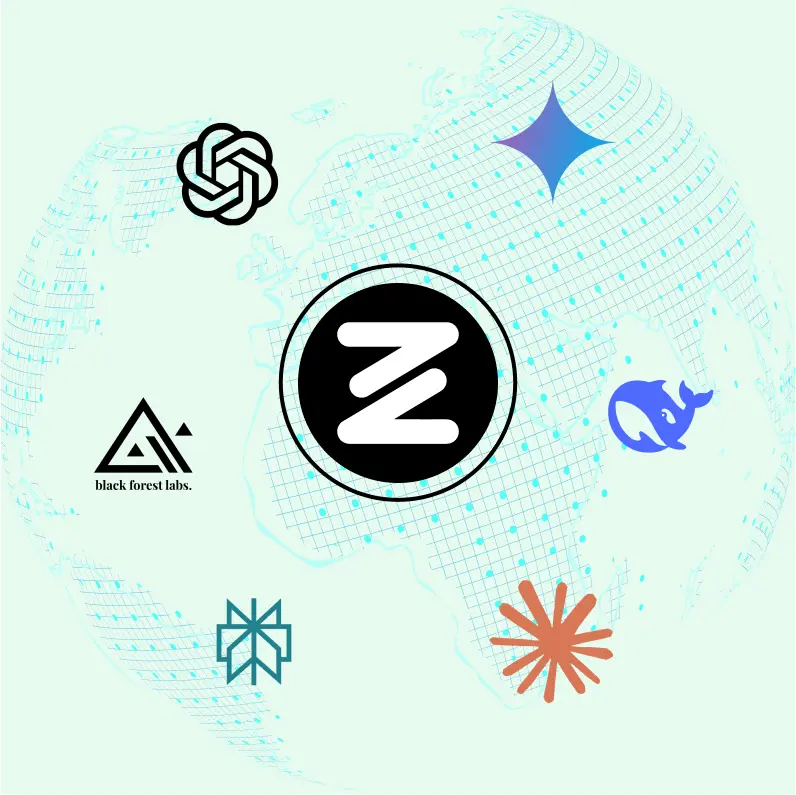
Speed run your documents
Upload documents to your Zemith library and transform them with AI-powered chat, podcast generation, summaries, and more
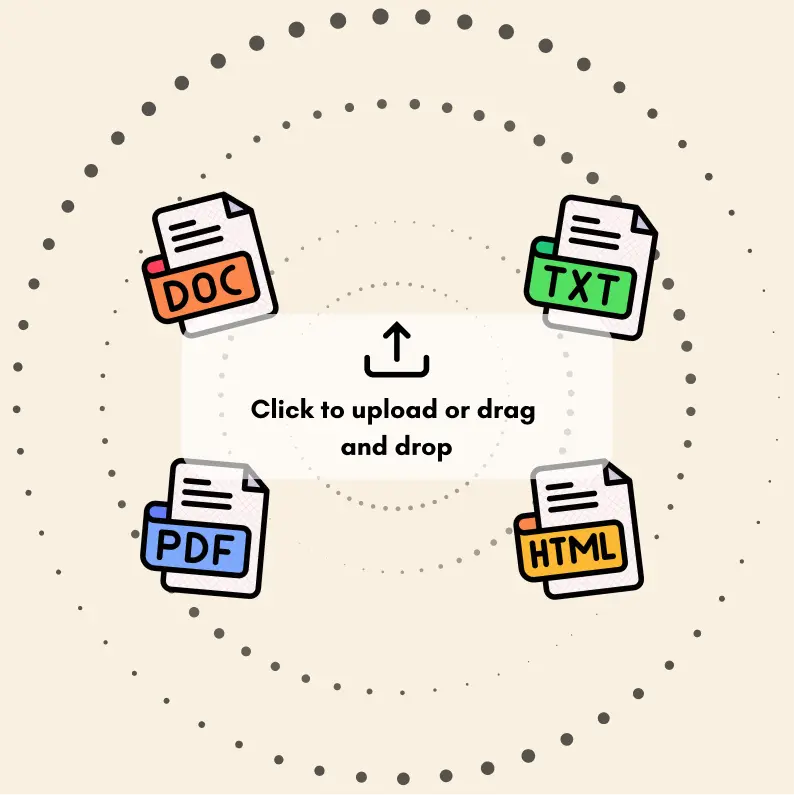
Transform Your Writing Process
Elevate your notes and documents with AI-powered assistance that helps you write faster, better, and with less effort
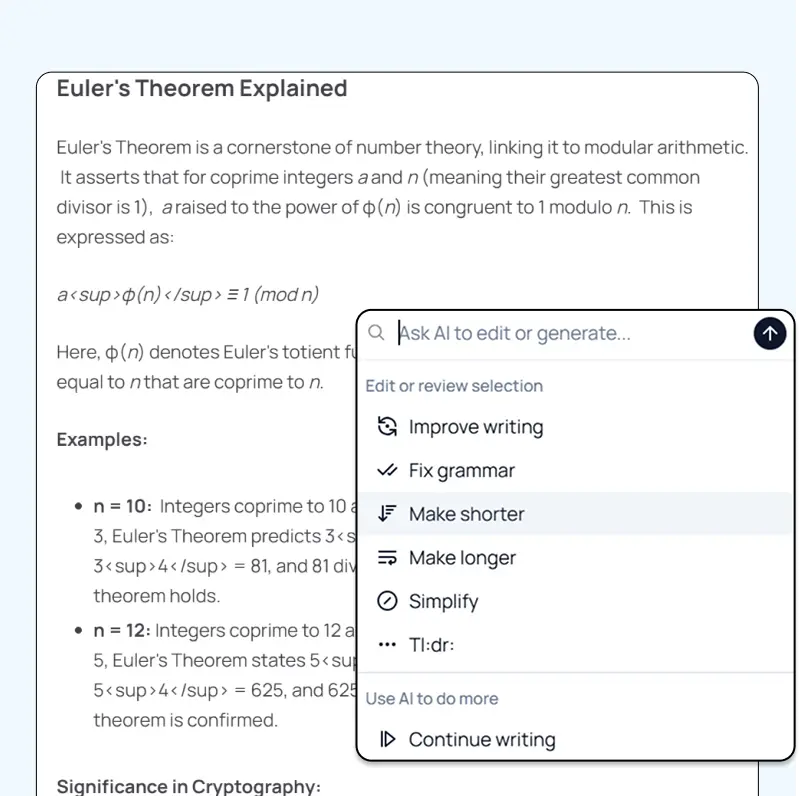
Unleash Your Visual Creativity
Transform ideas into stunning visuals with powerful AI image generation and editing tools that bring your creative vision to life
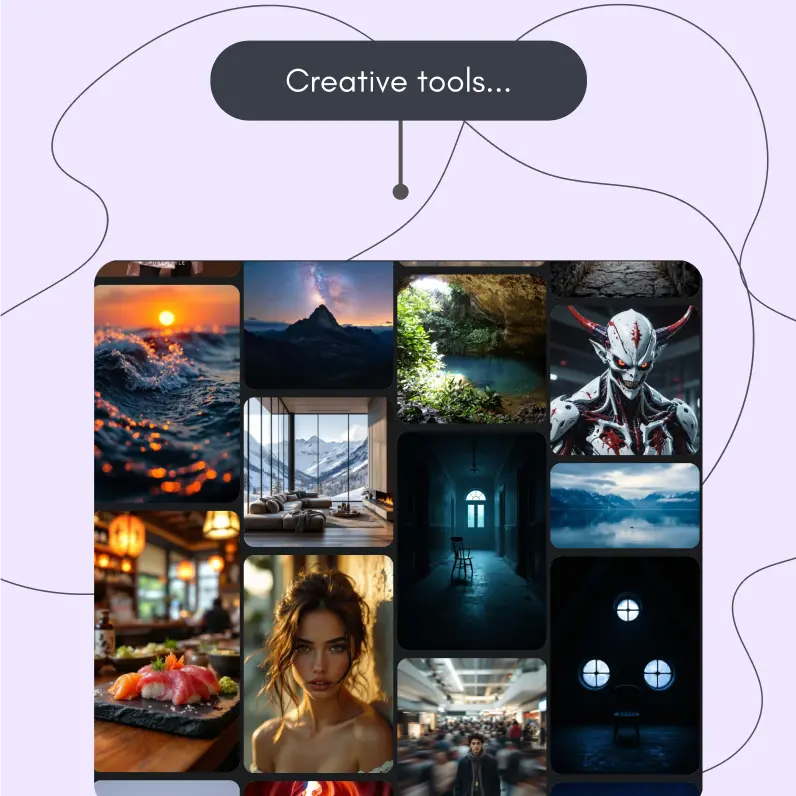
Accelerate Your Development Workflow
Boost productivity with an AI coding companion that helps you write, debug, and optimize code across multiple programming languages
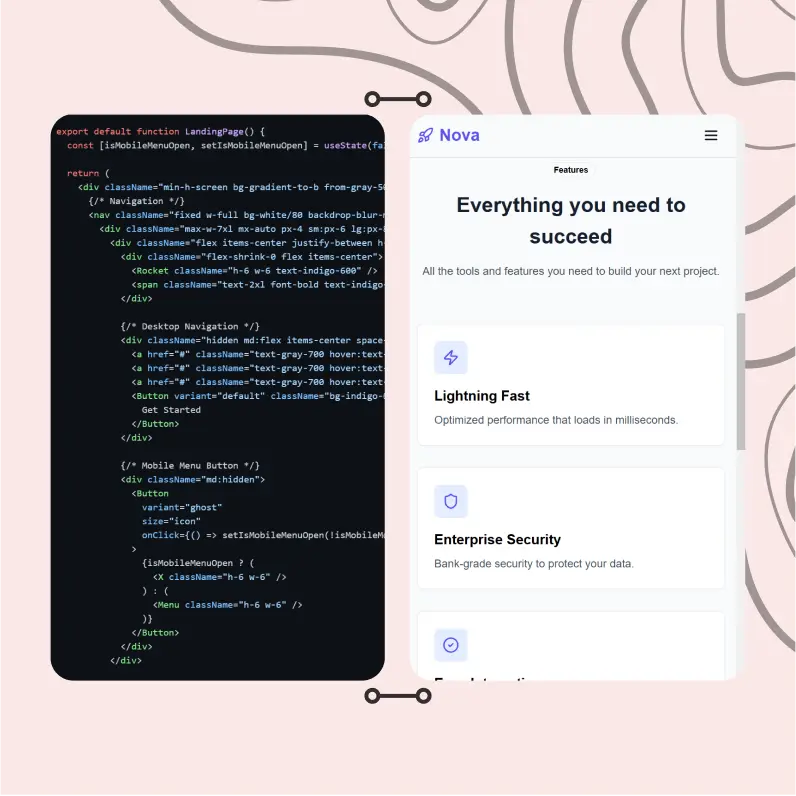
Powerful Tools for Everyday Excellence
Streamline your workflow with our collection of specialized AI tools designed to solve common challenges and boost your productivity
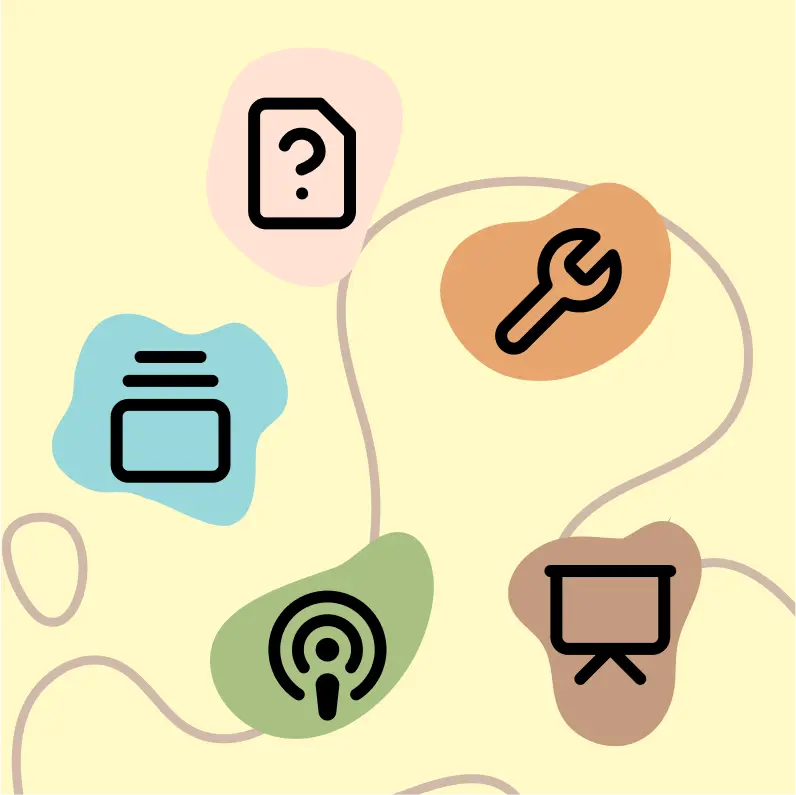
Live Mode for Real Time Conversations
Speak naturally, share your screen and chat in realtime with AI
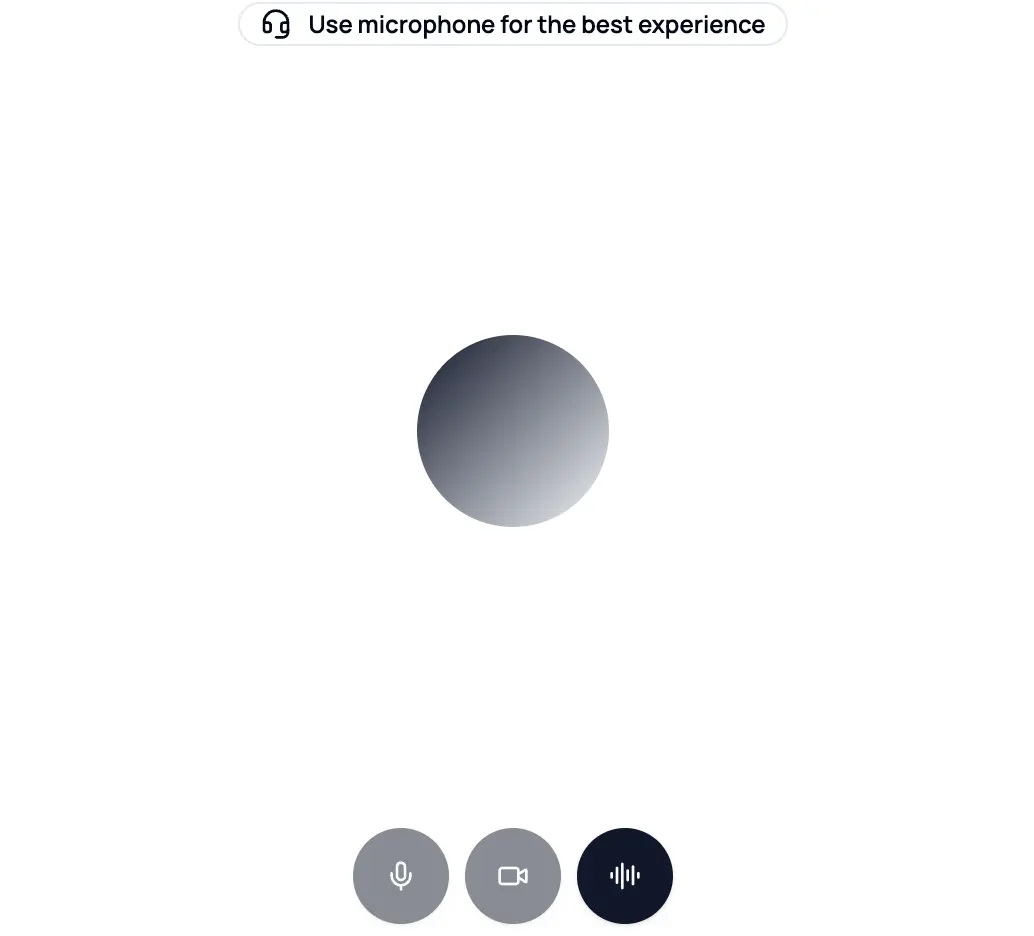
AI in your pocket
Experience the full power of Zemith AI platform wherever you go. Chat with AI, generate content, and boost your productivity from your mobile device.

Deeply Integrated with Top AI Models
Beyond basic AI chat - deeply integrated tools and productivity-focused OS for maximum efficiency
Straightforward, affordable pricing
Save hours of work and research
Affordable plan for power users
Plus
- 10000 Credits Monthly
- Access to plus features
- Access to Plus Models
- Access to tools such as web search, canvas usage, deep research tool
- Access to Creative Features
- Access to Documents Library Features
- Upload up to 50 sources per library folder
- Access to Custom System Prompt
- Access to FocusOS up to 15 tabs
- Unlimited model usage for Gemini 2.5 Flash Lite
- Set Default Model
- Access to Max Mode
- Access to Document to Podcast
- Access to Document to Quiz Generator
- Access to on demand credits
- Access to latest features
Professional
- Everything in Plus, and:
- 21000 Credits Monthly
- Access to Pro Models
- Access to Pro Features
- Access to Video Generation
- Unlimited model usage for GPT 5 Mini
- Access to code interpreter agent
- Access to auto tools
- 10000 Credits Monthly
- Access to plus features
- Access to Plus Models
- Access to tools such as web search, canvas usage, deep research tool
- Access to Creative Features
- Access to Documents Library Features
- Upload up to 50 sources per library folder
- Access to Custom System Prompt
- Access to FocusOS up to 15 tabs
- Unlimited model usage for Gemini 2.5 Flash Lite
- Set Default Model
- Access to Max Mode
- Access to Document to Podcast
- Access to Document to Quiz Generator
- Access to on demand credits
- Access to latest features
- Everything in Plus, and:
- 21000 Credits Monthly
- Access to Pro Models
- Access to Pro Features
- Access to Video Generation
- Unlimited model usage for GPT 5 Mini
- Access to code interpreter agent
- Access to auto tools
What Our Users Say
Great Tool after 2 months usage
simplyzubair
I love the way multiple tools they integrated in one platform. So far it is going in right dorection adding more tools.
Best in Kind!
barefootmedicine
This is another game-change. have used software that kind of offers similar features, but the quality of the data I'm getting back and the sheer speed of the responses is outstanding. I use this app ...
simply awesome
MarianZ
I just tried it - didnt wanna stay with it, because there is so much like that out there. But it convinced me, because: - the discord-channel is very response and fast - the number of models are quite...
A Surprisingly Comprehensive and Engaging Experience
bruno.battocletti
Zemith is not just another app; it's a surprisingly comprehensive platform that feels like a toolbox filled with unexpected delights. From the moment you launch it, you're greeted with a clean and int...
Great for Document Analysis
yerch82
Just works. Simple to use and great for working with documents and make summaries. Money well spend in my opinion.
Great AI site with lots of features and accessible llm's
sumore
what I find most useful in this site is the organization of the features. it's better that all the other site I have so far and even better than chatgpt themselves.
Excellent Tool
AlphaLeaf
Zemith claims to be an all-in-one platform, and after using it, I can confirm that it lives up to that claim. It not only has all the necessary functions, but the UI is also well-designed and very eas...
A well-rounded platform with solid LLMs, extra functionality
SlothMachine
Hey team Zemith! First off: I don't often write these reviews. I should do better, especially with tools that really put their heart and soul into their platform.
This is the best tool I've ever used. Updates are made almost daily, and the feedback process is very fast.
reu0691
This is the best AI tool I've used so far. Updates are made almost daily, and the feedback process is incredibly fast. Just looking at the changelogs, you can see how consistently the developers have ...
